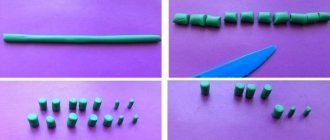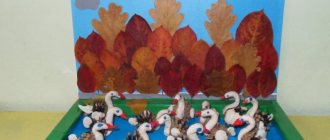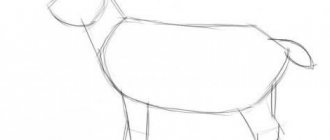Useful tips
How can you help your child develop drawing skills without ruining his individuality? The following recommendations will help with this.
- Play drawing game. These games will help you develop different skills. For example, tactile (drawing to music, in the dark, with eyes closed, with both hands or with the left hand). Visual perception is trained by drawings from memory or imagination, drawing from life. Figurative thinking - drawings of something fictional, characters from fairy tales. At the age of 5 years, concentration is developed by more complex tasks: drawing, for example, a fish with all its fins and scales.
- Always rejoice at your child’s drawings, praise for any achievement, for creative finds, never blaming or criticizing.
- Don't force your child to draw. Creativity cannot be forced and thus taught.
- Don't bother with your advice if the child doesn't ask for it. Let him learn to create not according to orders, but according to the call of his soul.
- Collect the young artist’s works in a separate folder and store them carefully: this is important both for him and for you.
- Engage in its development as a whole. Let him, first of all, understand the world around him, help him with this. Then he will learn to know and express his inner world.
- Show your interest in the process: when we draw with children, then sculpt what we depicted, write a fairy tale about it, look at paintings by great artists, go to exhibitions, talk about art - we get a full-fledged learning process.
- Try not to lead your child along a certain path, but help him follow the path that he chooses.
- Lead by example. If your child has no desire to draw, draw something yourself. From the heart and for him.
Yes, it is impossible to teach someone to be a brilliant artist. But parents are quite capable of helping their child develop their artistic abilities.
Recommendations from psychologists and teachers
During drawing classes, teachers do not recommend overloading children, otherwise, instead of enjoying a rich and interesting life, the child will suffer from fatigue and frayed nerves. If perseverance is not one of his virtues, then there is no need to force him to study, since he must come to this on his own.
By drawing, the baby develops certain abilities: visual assessment of shape, the ability to navigate in space, and feel colors. In addition, drawing classes bring joy to children and create a positive attitude. To complete easy tasks, you can use online programs.
We help you learn
So, the adult’s task is to help the child learn to draw and develop this skill. This needs to be done in stages: first, master the simplest lines, shapes, working techniques and materials, gradually complicating the tasks:
- we teach how to use pencils, paints, brushes, felt-tip pens;
- We show unusual drawing methods (stamping, abstraction, etc.);
- we help you master each color: both as a concrete and as an abstract concept (what associations each color evokes: objects, tastes, smells, tactile sensations, sounds);
- We help you gradually move from a simple task to a more complex one.
For example, to draw a man, a small child will act on the principle “stick - stick - cucumber”. At the initial stage, this is enough. With age, if the necessary attention is paid to the development of the child, he, when drawing, will already know that the head is not just a “round piece”: it has eyes, a nose, a mouth, it has ears, hair. Then he will learn to draw fingers, nails, hairs on the head, eyelashes, pupils, shoes. Even later, he will understand that the human body has certain harmonious proportions, and the face has its own individual features, its own expression.
If parents want their child to draw a person with anatomical accuracy, this is exactly what they can teach. In the same drawing circles. But the task is different - to develop the child’s creative abilities. Therefore, it is important to help him learn about the world gradually, step by step, in order to reflect new knowledge with the help of lines and colors. After all, drawings for children themselves are not a “photocopy” of something, whether successful or not to varying degrees. This is their way of conveying something important, experiences, achievements to adults. This is a unique “visual language”, a way to develop, think, and move forward.
Workspace organization
Drawing for children aged 4-5 years should take place in a pleasant environment. In order for a preschooler to feel as comfortable as possible at home, he needs to be allocated a special space. The children's room should be well lit, since the rays of light should fall from the opposite side from the hand with which the baby is drawing.
How is work space distributed?
Image techniques
The method of studying for five years is, first of all, an auxiliary means that does not determine all the specifics of activity in the classroom, and has only a narrow educational significance. For example, if reading a poem (story) at the beginning of a lesson was intended only to arouse interest in the task and attract the attention of children, then in this case the reading served as a technique to help the teacher in solving a narrow task - organizing the beginning of the lesson.
Important! Teaching by example occurs using a specific model and other visual aids. Before completing the task, the teacher must have a conversation with the children. The child learns to look at individual objects and then record his point of view using pencils, paper and other devices.
Non-traditional drawing techniques in the 2nd junior group of preschool educational institutions
What techniques are used in practice
Should I send my child to a drawing class?
Today, many parents send their children to specialized clubs. Here the children feel good, as they not only learn artistic activities, but also communicate with their peers. Before you take your child to classes, you need to make sure that he is really interested in this type of art.
Should a child attend a club?
Note! Do not forget that preferences in preschool age are unstable, so today the little one wants to study at an art school, but tomorrow he doesn’t.
Useful activity
Of course, artistic skills need to be developed and encouraged in a child; the benefits of drawing for a future student are obvious:
- development of fine motor skills, preparing the hand for writing;
- development of fantasy,
- skill in perceiving colors, arranging objects, creating a composition;
- psychological relief - in a drawing, a child can express what worries, pleases or excites him;
- memory training, perseverance;
- aesthetic development;
- the skill of self-expression through the necessary materials;
- development of imaginative thinking.
When we learn to draw, we learn, first of all, to see the world through the prism of our inner perception and express it on paper. This is a process necessary for full development, which helps in the future to find extraordinary solutions in difficult situations.
But here the question arises: do traditional drawing lessons teach this? After all, on them the child receives an algorithm, clear instructions, according to which he works on his sheet of paper. This is simply the technical implementation of a clearly defined task, honing the skill of using pencils or brushes with paints. Action according to instructions. Is there anything in this from true creativity, self-expression, the embodiment of one’s own plan? But the child gets used to this approach. Then he “acts according to instructions” in other situations, gradually forgetting about his fantasy, his inner world as something unclaimed.
Hence the question: is such a teaching necessary at all? It is impossible to teach a child to draw. We either give him a clear scheme, which kills his individuality, or we simply encourage him to learn to express something of his own in drawing, to look for his own methods, ways of working, and subjects. Although in reality it is not always easy. How to teach? Offer, show, explain, advise, switch...
Don't skimp on painting materials. Pencils that scratch the sheet and constantly break, brushes that “bleed” onto the drawing, and leaking felt-tip pens will discourage anyone from drawing.







